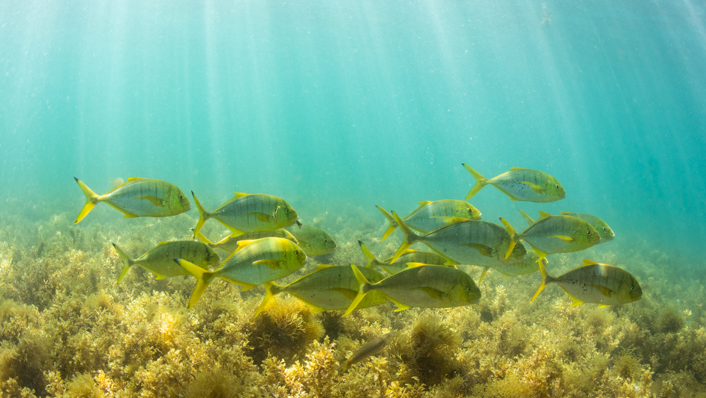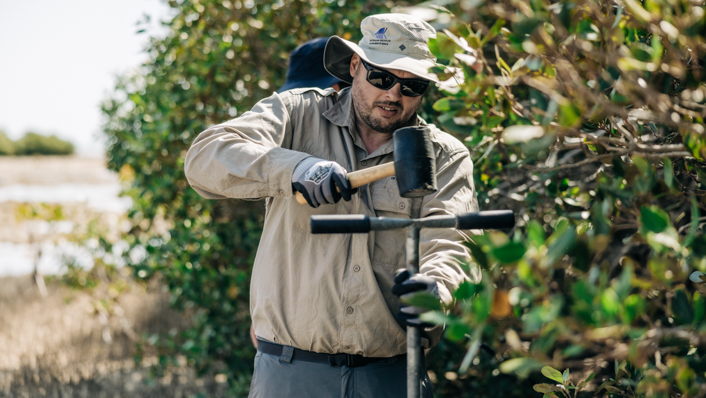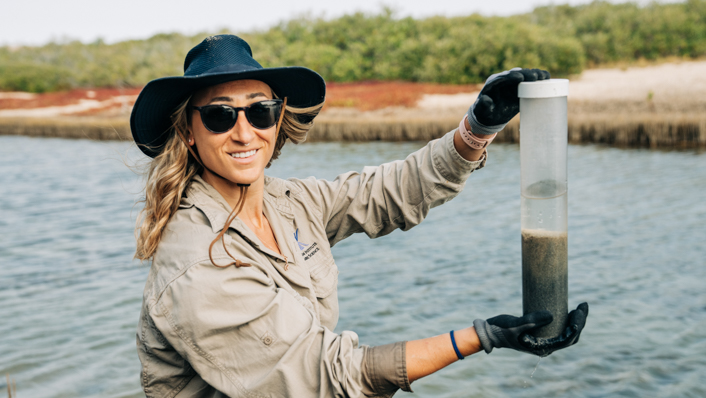The Australian Institute of Marine Science (AIMS) is exploring how a seaweed called Sargassum could reduce the severity of climate change by storing carbon in tropical seascapes.
The five-year, $20 million Blue Carbon Seascapes research project is jointly funded by AIMS and BHP to measure how much blue carbon is flowing from Sargassum into different coastal and deep ocean environments, how long it is stored there, and how we can best protect and enhance this natural process.

Blue carbon refers to the carbon stored in our oceans via the natural pathway of photosynthesis. Plants like mangroves, seagrass and seaweeds use photosynthesis to absorb carbon dioxide from the air and water around them and use this to help grow their leaves, stems and roots. When pieces of these plants break off and become buried in the mud the carbon they contain is safely locked away from the atmosphere for hundreds to thousands of years.
AIMS acting said Blue Carbon Seascapes is a major new program of public good research for AIMS, Australia’s tropical marine research agency.
“AIMS has a clear strategy to protect Australia’s marine ecosystems from the effects of climate change,” said Mr Ahyick.
“Our initial research has found there are natural processes under the waves that could help. It’s imperative we explore these options to support healthy tropical oceans into the future.
“We welcome BHP’s involvement in this project as a funding partner as we accelerate our progress towards our vision of supporting resilient, healthy oceans.”

Principal Research Scientist Dr Chris Fulton said the research would help to answer fundamental questions in blue carbon science.
“We know that vast meadows of Sargassum naturally grow along tropical coasts around the world, including Australia, where every summer they go through a rapid growth spurt, soaking up carbon from the seawater around them as they grow. Once Sargassum has completed its breeding cycle in autumn, the seaweed naturally breaks away from the bottom and flows across the seascape, taking most of the accumulated carbon with it,” he said.
“Some of this Sargassum provides food for the many species that occupy our tropical oceans, but there are tantalising signs that Sargassum-bound carbon is also buried in the mud under mangroves, seagrass beds and in the deep sea. In this Blue Carbon Seascapes project, we are collecting the hard data needed to verify how much Sargassum carbon is being stored in our tropical oceans.”

Investigations for the Blue Carbon Seascapes project are already underway off the Western Australian coast. AIMS scientists have been collecting soil cores from mangroves along the Ningaloo and Exmouth Gulf coasts to measure how much blue carbon is stored within these soils, how long that carbon has been buried, and which plant fixed that carbon before it was buried. More soil cores will be collected around Port Hedland in early 2024.
All outcomes of the research will be fully scrutinised via independent peer review and made freely available to the world, helping to advance national and international blue carbon policies, standards and methods. It will also provide transparency, accountability and confidence to industry, businesses and governments to adopt blue carbon solutions in achieving their emissions reduction targets.
Dr Fulton said the findings will be transferable to many parts of the globe and will help fill knowledge gaps in this developing area of science.
“If we find that Sargassum can be a solution to safely store carbon in our oceans, this project will provide a game-changing addition to our portfolio of solutions to climate change,” he said.
“Reducing our future greenhouse gas emissions must be coupled with solutions to draw down the excess carbon already in our atmosphere – blue carbon is one solution to achieve this drawdown using the ancient process of photosynthesis in the sea.”
Feature image: Violeta Johnel Brosig








